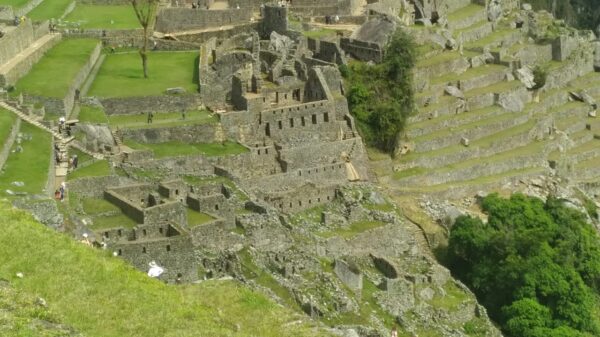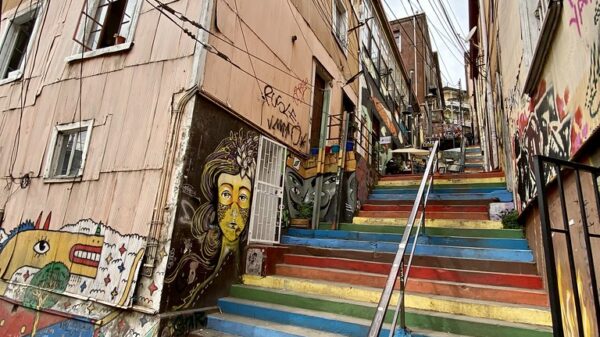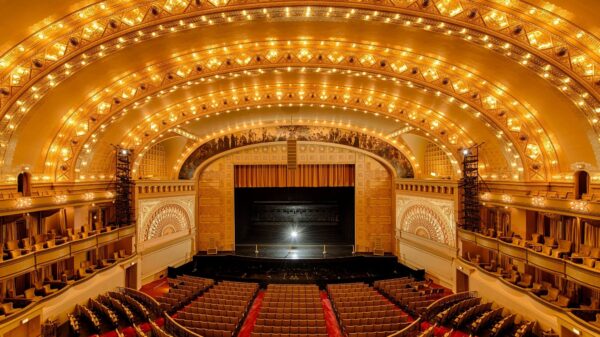Perched high in the Andes Mountains of Peru, Machu Picchu remains one of the world’s most awe-inspiring sites—rightfully honored as one of the Seven Wonders of the World. At 7,970 feet above sea level, this ancient citadel’s name translates to “Old Peak” in Quechua, one of Peru’s indigenous languages. Though built in the 15th century by the Inca Empire, Machu Picchu was introduced to the global stage in 1911 by explorer Hiram Bingham.
The Inca constructed Machu Picchu using a technique called ashlar masonry, fitting stones so precisely that not even a blade could pass between them. This method gives the site a rare durability—even in earthquake-prone Peru, the stones shift during tremors and then realign. Its intricate design includes agricultural terraces engineered to prevent landslides. Machu Picchu is more than scenic; it’s a masterclass in ancient architecture and environmental harmony.
Though the site was likely abandoned in the 16th century due to the Spanish conquest, it remained hidden and untouched by the colonizers. Because of this, and the preserved stonework, it was named a UNESCO World Heritage site and officially designated a Wonder of the World in 2007. As for its original purpose? Scholars still debate whether it was a spiritual sanctuary, astronomical observatory, military lookout, or royal retreat. With no written records left behind, the truth remains a mystery.
For the Incas, astronomy wasn’t just a science—it was a way of life. They believed in the interconnectedness of the human, natural, and cosmic realms. Structures like the Temple of the Three Windows reflect this belief, symbolizing the three planes of Inca cosmology: Hanan Pacha (upper world), Kay Pacha (earthly world), and Uku Pacha (underworld). The alignment of buildings with solstices and celestial bodies suggests that Machu Picchu was a sacred space used to guide ceremonies, harvests, and spiritual rhythms. The Incas even believed the Milky Way mirrored the Sacred River (Urubamba), which flows below the site. Today, it still feels like hallowed ground—part engineering marvel, part spiritual portal, and fully alive with ancestral energy.
Getting there, however, is part of the journey—and not always easy. For a smoother experience, consider these travel options and tips:

For Quick Arrivals:
- Take a train from Cusco or Ollantaytambo via Peru Rail or Inca Rail.
- The most scenic ride is from Ollantaytambo to Aguas Calientes (1.5 hours).
For Adventurous Hikers:
- Classic Inca Trail: 4-day trek ending at the Sun Gate (Inti Punku). Permits required months in advance.
- Short Inca Trail: 2-day option with a similar destination.
- Salkantay Trek: 4–5 days, scenic and less crowded.
- Lares Trek: More cultural, passing through remote villages.
- Budget Route via Hidroeléctrica:
- Bus from Cusco to Hidroeléctrica (6–7 hours)
- Walk 2–3 hours along the tracks to Aguas Calientes
Bus or Hike Up from Aguas Calientes:
- Shuttle: $12, 30 minutes, runs every 10–15 minutes
- Hike: 1.5–2 hours uphill
Do’s:
- Bring your passport (required for entry)
- Buy entrance and train tickets in advance
- Arrive early or late for fewer crowds and better views
- Wear sunscreen, a hat, and sturdy shoes
- Pack bug spray, water, and a raincoat
- Acclimate in Cusco for 1–2 days before the trip
- Be mindful of your assigned time slot (2–3 hours average)
Don’ts:
- No tripods, drones, or large backpacks
- Don’t stray off marked paths or touch restricted ruins
Traveling to Machu Picchu is both a pilgrimage and an unforgettable adventure. Once you arrive, you’ll understand why it’s on so many lifelong bucket lists.





































